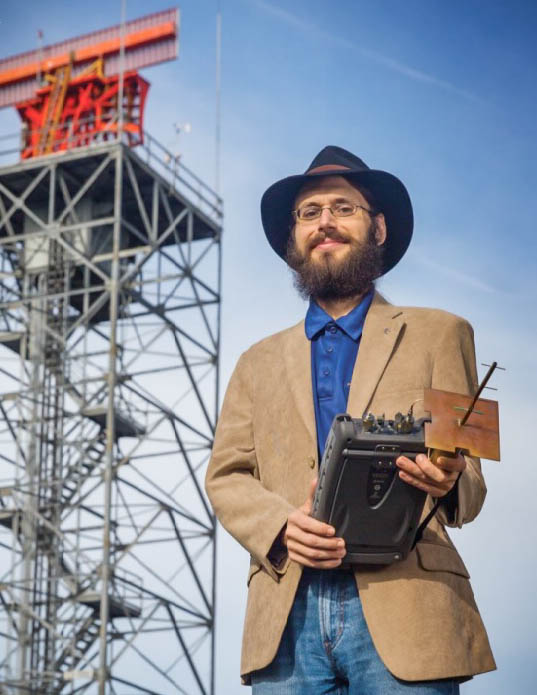Exploring the dynamic universe with radio astronomy - Beamforming, Transients, SETI, and the Allen Telescope Array

Space is filled of photons of all wavelengths, from very short (e.g., gamma) to very long (e.g., radio), which convey information about the processes that generated them. Radio telescopes are used to sense these lower frequencies in an effort to answer fundamental questions about the composition and evolution of our universe, further our understanding of physics, and also to answer the age-old question: “Are We Alone?”
Advances in computing have enabled changes in the paradigms in radio astronomy since the first large single-dish systems; modern systems can now have hundreds, or thousands, of antennas, across geographically-large apertures and linked through signal processing. In this talk, Dr. Billy Barott will present an overview of this subject, including the science that motivates these instruments, and will discuss details of the Allen Telescope Array in particular, including both engineering details and a sampling of some experiments that have been performed with this radio telescope.
Date and Time
Location
Hosts
Registration
-
 Add Event to Calendar
Add Event to Calendar
- Nowowiejska 15/19
- Warszawa, Mazowieckie
- Poland 00-665
- Building: Faculty of Electronics and Information Technology
- Room Number: 229
- Click here for Map
- Contact Event Host
-
Piotr Samczynski
Tel: +48 22 2345588
Speakers
William C. Barott of Embry-Riddle Aeronautical University
Exploring the dynamic universe with radio astronomy - Beamforming, Transients, SETI, and the Allen Telescope Array
Space is filled of photons of all wavelengths, from very short (e.g., gamma) to very long (e.g., radio), which convey information about the processes that generated them. Radio telescopes are used to sense these lower frequencies s in an effort to answer fundamental questions about the composition and evolution of our universe, further our understanding of physics, and also to answer the age-old question: “Are We Alone?”
Advances in computing have enabled changes in the paradigms in radio astronomy since the first large single-dish systems; modern systems can now have hundreds, or thousands, of antennas, across geographically-large apertures and linked through signal processing. In this talk, Dr. Billy Barott will present an overview of this subject, including the science that motivates these instruments, and will discuss details of the Allen Telescope Array in particular, including both engineering details and a sampling of some experiments that have been performed with this radio telescope
Biography:
Dr. William C. Barott (Billy) is a Professor of Electrical Engineering at Embry-Riddle Aeronautical University in Daytona Beach, USA. He has been at the university since 2006, and was a visiting research engineer with the SETI Institute and the Allen Telescope Array between 2007 and 2011, living on-site at the ATA and developing instrumentation for the facility. His continued research in radio astronomy focuses on mitigation of radio frequency interference. In his other work, Dr. Barott investigates performance prediction and radio propagation for passive radar. He is a senior member of the IEEE, and member of URSI, the AIAA, and ASEE, and member of the AIAA’s Digital Avionics Technical Committee.
Email:
Address:Embry-Riddle Aeronautical University, , Daytona Beach, Florida, United States

